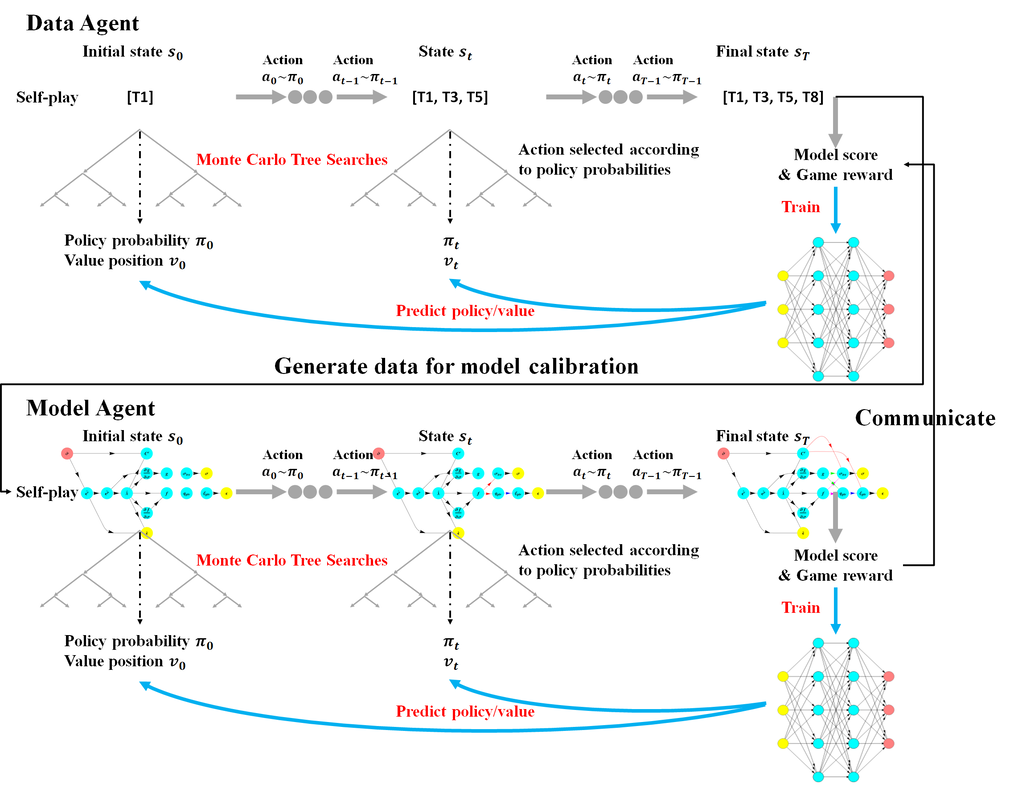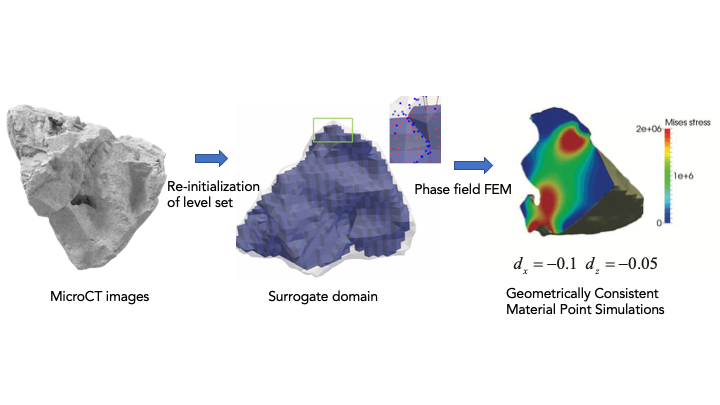|
1. 2019 workshop to celebrate Prof. J.S. Chen's 60th birthday 11:00am – 11:15am March 11th Alameda Room, The Pleasanton Marriot Hotel, Pleasanton, CA An Adaptive Meta-Modeling Game for Automated Generations of Elasto-Plasticity Models with Self-Guided Discovery Abstract: We introduce a meta-modeling game based on concepts from multi-graph theory to find the optimal way to generate data and write models for blind predictions of a physical process We consider an idealized situation in which the modeling process of history-dependent process can be represented by a sequence of decision making where modelers make choices to formulate a sequence of actions to generate models. While previous work on data-driven modeling often focus on completely replacing hand-crafted theory with a data-driven paradigm, our goal is to seek the best option that represents the hierarchy of material responses, i.e. the knowledge represented by a directed graph. As such, we introduce a new concept where all the modeling options can be recast as a directed multi-graph and each instant/configuration of the model can be understood as a path that links the source of the directed graph (e.g. strain history) to the sink (e.g. stress). This treatment enables us to further conceptualize the hybrid modeling process as a selection of the optimal choices in a decision tree search via deep reinforcement learning. In the case where availability of data is limited, the meta-modeling algorithm also explores the weakness links in the constitutive laws and explore the optimal set of experiments to yield the best forward predictions under a limited budget. 2. Stanford Department Seminar
4:30pm to 5:30pm March 12th, Shriram 104, Stanford University Phase field damage-plasticity framework for fluid-infiltrating materials with size-dependent anisotropy Abstract: Rock salt and clay are the prime candidates considered for nuclear waste geological disposal. In both materials, the microstructural attributes, such as the crystalline slip system, micro-fabric and mineral contacts, may lead to distinctive anisotropic responses at different length scales. In this talk, we present a unified mathematical framework designed to capture the size-dependent anisotropy of these path-dependent hydro-mechanical responses of geological materials used for nuclear waste disposal. In the brittle regime, we introduce a phase field fracture model in which the difference in critical energy release rates for different kinematics modes is considered. A search algorithm is used to determine the kinematic mode and propagation direction of the crack. In the ductile regime, we introduce a non-coaxial anisotropic regularization of the anisotropic modified Cam-Clay (MCC) model proposed by Semnani et al. 2016 to generate size-dependent plastic flow that could be non-coaxial to the stress gradient of the yield function. The influence of the size-dependent anisotropy on the formation of the shear band and the macroscopic responses of the effective media are analyzed in 2D and 3D numerical examples. The coupling between the damage and plastic responses of anisotropic materials, the transition from the brittle to ductile regimes and corresponding the poromechanical configurational force mesh adaption strategy required to capture the sharp gradients of pore pressure and phase field are also highlighted.
0 Comments
Leave a Reply. |
Group NewsNews about Computational Poromechanics lab at Columbia University. Categories
All
Archives
July 2023
|



 RSS Feed
RSS Feed